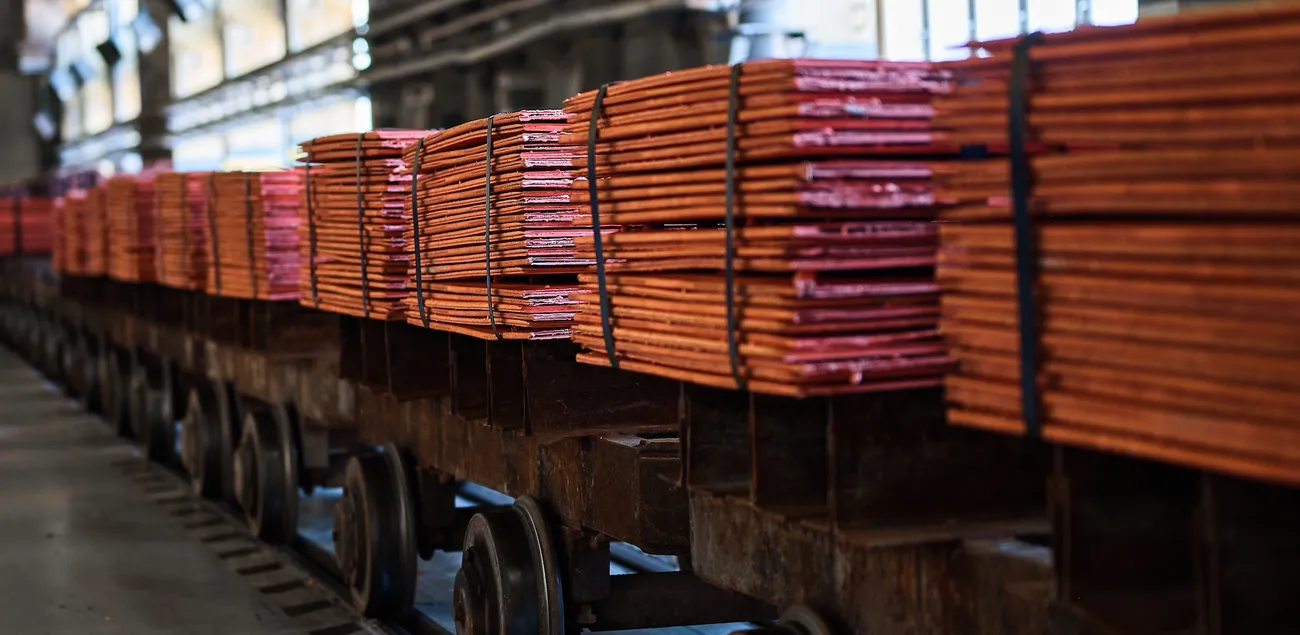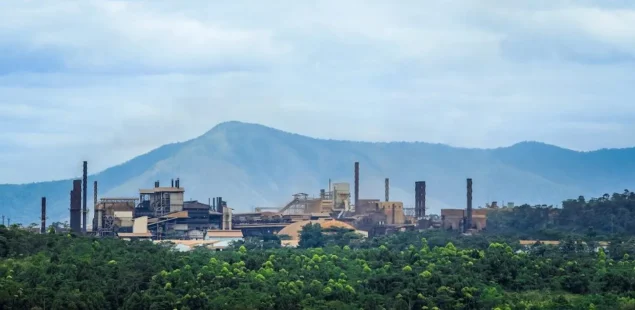
London Metal Exchange copper has posted a 12% gain through the first half of 2025, outperformed only by volatile tin markets, as US President Donald Trump’s trade investigation launched in February created substantial price differentials between American and international markets. The CME copper contract currently trades at a $1,200 per metric ton premium over LME prices, with physical metal flowing toward US markets while London Metal Exchange inventories decline and time spreads enter steep backwardation.
Tariff Investigation Creates Market Distortions
Trump’s Section 232 investigation into US copper imports, initiated in February 2025, has fundamentally altered global copper trade flows ahead of the November deadline for completion. The investigation examines whether copper imports threaten national security, with Commerce required to deliver a report by November 25, 2025, potentially leading to comprehensive import tariffs that would further disrupt established supply chains and pricing mechanisms.
CME warehouse stocks have expanded significantly as arbitrage opportunities direct physical copper toward US markets, while LME inventories contract under supply pressure. The cash-to-three-month spread has moved into steep backwardation, indicating tight near-term supply conditions in international markets despite adequate global production levels.
Chinese Smelter Response Remains Limited
Market participants expect Chinese copper smelters to increase exports to address supply gaps created by trade flow disruptions, though meaningful increases have not yet materialized. Chinese refined copper production capacity significantly exceeds domestic consumption, with the country accounting for over 50% of global copper consumption while maintaining substantial smelting capacity, providing potential export availability if economic incentives align with government policy objectives.
However, Chinese authorities have historically prioritized domestic supply security over export market opportunities, particularly during periods of international trade tension. The government’s response to current market conditions will significantly influence global copper availability and pricing dynamics through the remainder of 2025.
Tin Market Volatility Reflects Supply Disruptions
LME tin has experienced extreme volatility, reaching three-year highs of $38,395 per tonne in April before declining to $28,925 following broader metals market corrections. Current prices near $33,500 per tonne reflect ongoing supply constraints from the prolonged closure of Myanmar’s Man Maw mine, which has disrupted concentrate flows to Chinese smelters for nearly two years.
Chinese tin concentrate imports declined 36.51% during January-May 2025, forcing domestic smelters to reduce refined production by 15% year-over-year in June according to Shanghai Metal Market data. Shanghai Futures Exchange tin inventories have declined since April, while LME stocks have halved during the first half, creating the only sizeable backwardation in base metals markets besides copper.
Aluminum Premiums Surge in Fragmented Market
Trump’s 50% aluminum import tariffs have created market fragmentation reflected in regional premiums rather than futures contract arbitrage opportunities. US Midwest premiums have surged to 60 cents per pound ($1,323 per metric ton) above LME prices, while premiums in Europe and Asia decline due to displaced metal flows and weakening regional demand.
LME aluminum has recovered from April lows of $2,335 per tonne to current levels near $2,600, representing a modest 3% year-to-date gain that falls short of analyst expectations. Exchange inventory declines have created periodic supply tightness, though underlying demand weakness in key consuming regions limits price appreciation potential.
Nickel Struggles with Indonesian Oversupply
LME nickel remains essentially unchanged from January levels near $15,000 per tonne, close to production costs for refined metal from Indonesian nickel pig iron according to Macquarie Bank analysis. Indonesian production expansion continues generating surplus supply, while Chinese electric vehicle manufacturers increasingly adopt nickel-free battery chemistries that reduce demand growth projections.
LME nickel inventories declined in May for the first time since March 2024, suggesting potential stabilization in the persistent inventory build that has pressured prices. However, continued Indonesian capacity expansion makes sustained price recovery unlikely without production restraint from the world’s largest nickel producer.
Lead Outperforms While Zinc Underperforms
Lead has gained 6% year-to-date, benefiting from automotive battery replacement demand that follows independent seasonal cycles. Northern hemisphere summer temperatures typically increase battery failure rates, supporting lead consumption during peak seasonal periods that provide some insulation from broader industrial demand weakness.
Zinc remains the worst-performing LME metal with a 6% decline, reflecting robust mine production growth of 5.1% year-over-year through April according to the International Lead and Zinc Study Group. Global refined zinc markets are projected to record a 93,000 metric ton surplus in 2025, with Chinese production increases contributing to oversupply conditions that have pressured galvanizing metal demand.
Company Background and Market Context
The London Metal Exchange operates as the world’s primary venue for industrial metals trading, with copper, aluminum, nickel, zinc, lead, and tin contracts serving as global pricing benchmarks. The exchange’s warehouse network and delivery mechanisms provide physical market infrastructure that supports international trade flows and price discovery mechanisms.
Trump’s trade policies have created unprecedented disruptions in metals markets, with Section 232 investigations and tariff implementations affecting established supply chains developed over decades. The investigations examine whether imports of specific metals threaten US national security, potentially leading to comprehensive trade restrictions that would fundamentally alter global market structures.
Industrial metals serve essential functions across manufacturing, construction, and infrastructure applications, with demand closely tied to global economic activity and industrial production levels. Current market conditions reflect the intersection of trade policy uncertainty, regional demand variations, and supply chain adaptations that continue evolving as geopolitical tensions influence commodity trade patterns.



